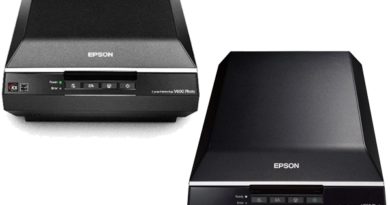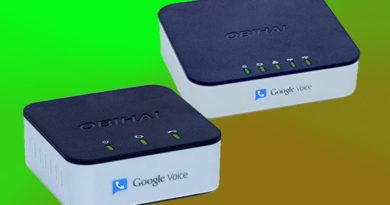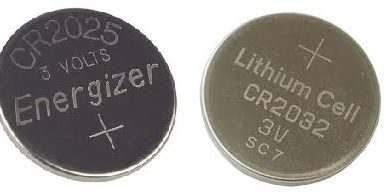Epson V600 Vs V700
**Articles may contain links that I earn compensation for if clicked and you make a purchase. As an Amazon Associate, I earn from qualifying purchases. These earnings do not actually impact the price of the product or service.
Buying a film scanner can make or break your game. As a photographer, you know that you need to get a reliable scanner because, with a lousy one, the final outcomes will be sub-par no matter how grand your photography skills are.
As such, most professional photographers often end up with an Epson Scanner. There are numerous models out there, but most choices usually come down to the Epson V600 vs. V700.
Epson Perfection V600 and V700 models are designed for projects and businesses that demand extremely high-quality images and captures. Both scanners come with very high-resolution scanning engines as well as adapters that make them able to complete transmissive media such as negatives, slides, and transparency films.
However, they don’t have automatic document feeders for bulk-scanning, and therefore they are best suited for design departments or companies that need to create high-quality images.
So which is a better buy between the V600 vs. V700?
Between V700 vs. V600, both present remarkable performance, even though the V700 model seems slightly superior. For a more detailed comparison, we’ll be focusing on all key aspects with respect to both products starting from the scanning area, resolution, connectivity, product cost, and other general specifications as well.
Table of Contents
Scanning Area
The scanning area for both V600 and V700 measures 8.5 inches width and 11.7 inches height, which is large enough to accommodate more extensive papers similar to the European A4 sheets or American Letter size. The main difference between the two scanners stems from the ability to scan slides/transparencies.
If you are planning to scan transparent slides, then you might want to choose the V700. Both models can scan transparent documents, but the scan size of the V600 is much limited compared to that of V700. So if you want to scan sheets of slides or such transparent items, the V700 scanner can perform the task much better.
The V600 has an inbred transparency scanner that boasts a scanning area of 2.7 inches wide and 9.5 inches long. On the other hand, the V700 comes with a transparency scanning area that measures 8 inches wide and 10 inches in length. In comparison, the V600 can scan four slides at a go, whereas the V700 model can do 12 scans.
Resolution
Both models can attain 16 bits of grayscale information and 48 bits of color report. They both come with 6400 dots optical resolution per inch. However, the V700 has an additional lens to optimize performance when scanning at 4800 dpi resolution.
The D’Max rating for the V700 is 4.0, which is higher than that of V600 that comes in at 3.4. Dmax represents the deepness of black that the scanner can reach, and while both are good, the V700 provides more details about the image dark areas.
Connectivity
Both the V600 and V700 come with commercial-grade 2.0 USB ports. The V700 exceeds with an IEEE-1284 FireWire port. Conceivably, FireWire can also provide a good speed on a computer that has excellent traffic on its USB bus- although Epson recommends utilizing the USB port for best performance.
General specifications
TheV600 features four buttons on its front panel; Scan, Copy, Pdf, and Email, and they all work with unit software to systematize scanning tasks. For the V700, it has only one button (start button) on its panel.
The V600 is relatively compact and light, measuring 19 inches tall and 11 inches wide and weighs 9 pounds. Coming down to reliability, the V700 exceeds the V600 in that it can last for an average of 100,000 cycles between failures (or MXBF) much higher than the V600’s 30,000.
Product price
Price should not be the main factor to think through when deciding on the scanner to buy. Consider focusing on the value instead. The Epson V600 comes in for a much less retail value compared to the V700. However, the V600 may serve sustainably, depending on your needs. There are significant differences between the V600 vs. V700, and depending on your needs, you may still want to choose the V700.
As you may already know, the price difference between V600 and V700 is a good indicator of whether the performance difference between the two is negligible. On that note, you may realize that the difference in Dmax rating (3.4 vs. 4.0) is significantly crucial as it can hugely affect the quality of the image. The difference in the number of slides per time is usually in the category of “history” and is somewhat degraded by time.
When it comes to availability, the Epson V700 models are promptly available at present. For some reason, the Epson V600 models are becoming relatively scarce (according to photograph lovers). That means the market might be controlling the production of this model. Or it might be implying that the brand is about to introduce a V650 scanner or such.
Scanning Format and Quality
For 35mm slides and medium slides, the Epson V600 will work exceptionally. Nonetheless, the quality presented on the DPI resolution is no way near to what is offered by the more expensive Epson V700. Still, the V600 is an excellent scanner for many enthusiasts and can handle various needs really well. But if you want high-quality prints, then you should certainly go with the V700 scanner.
In case you want to capture and create large-format slides, the Epson V700 model is the best option because the V600 is not actually designed to scan large format slides. But if what you want to scan is just around 35mm and 120mm, then the Epson V600 may be a better option between the two.
Optical Density and Dmax Rating
As previously mentioned, the V700 boasts a Dmax rating of 4.0, whereas the V600 has only 3.4. The higher the Dmax rating, the better print details you’ll get, especially in darker and shadow areas of your print. So, in this particular aspect, the Epson V700 seems to be more effective than the V600.
It provides much detail for scanned images as compared to the 600 model. Both canners offer a maximum scanning resolution of 12,800 by 12,800 dpi. Even with equal maximum resolution, the V700 will certainly have a higher scanning quality due to the higher Dmax rating. The V600 offers a 4800 by 9600 native resolution while the V700 gives you a 6400 by 9600 resolution.
Sharpness
Both products offer great value for money, but if you can meet the expense, the V700 is the better buy overall. It is much more expensive than the V600, but it provides a high pixel density, great transparent adapter, and is faster.
If you are looking forward to scanning numerous old Kodachrome slides, both scanners will serve you really well, but the Epson V700 will perform the task much faster. Besides the scan speed, the V700 model can handle up to 12 slides at once, while the V600 can only complete four slides at a time.
Photograph lovers who are going through a multitude of slides should realize that it can be time-consuming working on four slides at a time. And so they should go for the Epson V700.
On the other hand, amateurs who just want to execute some scanning activities can possibly save the amount and go for the V600 model. The V600 is a reliable scanner, but you need to understand that it has more limitations, particularly when compared to the Epson V700.
You Might Also Like: Epson V550 Vs V600
Digital Ice
The V700 and V600 both incorporate a Digital Ice software. The need for the Digital Ice software is to remove the specks, creases, tears, as well as other imperfections from scanned photos. In fact, you’ll save much of your scanning time once you become accustomed to the Digital Ice software. And if you are scanning numerous images, you are bound to be impressed by the effectiveness of the Digital Ice. It will significantly help cut your Photoshop needs.
Conclusion
After comparing the Epson V600 vs. V700, we can confidently conclude that both are quality scanners. Epson V600 is a considerable photo scanner to buy if you are on a budget and don’t have that many transparent slides to scan.
It’s also a great deal to those enthusiasts with just a good number of slides that need to be backed up. Likewise, the Epson V7000 is a flatbed scanning tool worth purchasing if you want to create jumbo prints, detailed shadows, or are a professional in need of high-quality professional prints.
In case you have any large format photos to scan, then the Epson V700 is your one-stop choice quality scanner. Not only does it provide more top-quality scans, but it also gives you the ability to complete up to 12 slides at a go. The V600, though great value for money, will only allow for four slides at a time.
With that being said, the ultimate choice between V600 vs. V700 is subject to your needs and budget. Ideally, you can choose the V600 if your scanning needs are somewhat limited, but for most professionals, the extra bucks spent on the Epson V700 flatbed scanner will be worth it as well.



Love this article! I’ve been searching for information that expland what I should be looking for when investing in a scanner for old family photos. This article is very informative and definitely helped me decide on what would be best for my needs. Thank you.